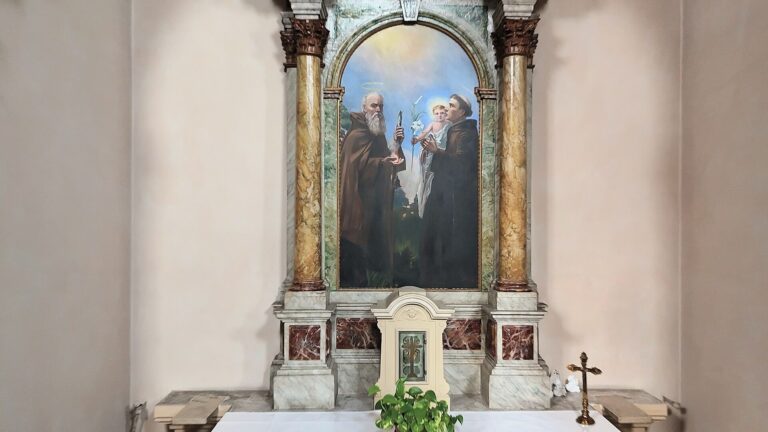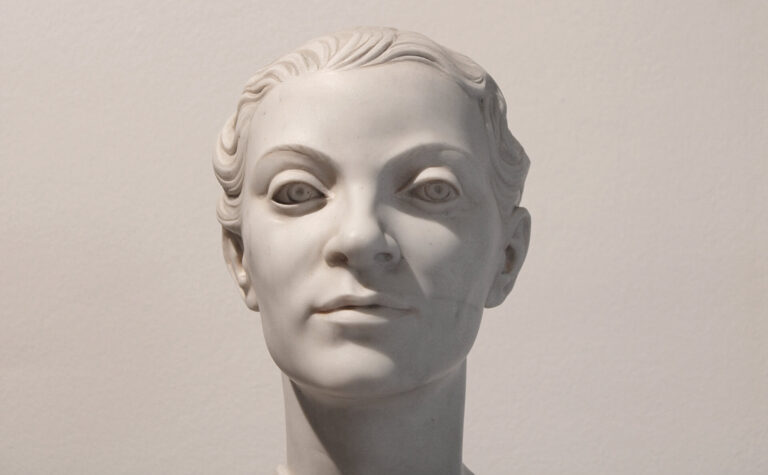ARTISTS’ ROADS
LE VIE DEGLI ARTISTI
watch the videos at the bottom of the page!
PIEVE DI SOLIGO:
1 – GIOVANNI ZANZOTTO
2 – MARTA SAMMARTINI
1 – Giovanni Zanzotto, Between Concreteness and Poetry
A small landscape, a nocturne.
It is a summer evening, when the cicadas fall silent and give way to crickets and fireflies.
A landscape of freshness, rarefied air, and sounds in the silence, just as the painters of the Cinquecento in the Veneto had made landscape a protagonist in their works.
We are in the hills of the upper Treviso area: it is the luminosity of the sky that tells us so.
These places, now world-famous and listed as a UNESCO World Heritage Site, have a poetic voice known around the world.
Andrea Zanzotto.
With words that are chiseled and lofty, carved from an ancient, everyday language, he told the story of this land:
From the sky is this penumbra
Where without end is the faith
Even of the insect that proceeds
From the winter leaf to the star…
From the sky is this treasure chest of villages
Asleep amid the dark
And fertile presences of the mountains…
Words and painting are deeply connected.
The verses are by Andrea Zanzotto; the brushstrokes are by his father, Giovanni.
Depicted are two saints named Anthony, two pillars of popular devotion.
Saint Anthony Abbot, with his pig, his bell, the fire, and his long white beard: a hermit saint.
He was venerated as protector of animals, essential to peasant life. The fat of pigs was even used to soothe the pain of shingles, known in Italy as “St Anthony’s fire.”
Saint Anthony of Padua wears the Franciscan habit, has a tonsure, the Christ Child in his arms, and a lily symbolising purity of life and thought.
So familiar a figure that he is known simply as “the Saint.”
The gaze of Saint Anthony Abbot engages and involves us.
The precise linework, the perfect composition of the hands, the brushwork, at times solid, at times broken, testify to Zanzotto’s artistic maturity.
The painting is signed and dated: 1924.
A pivotal year for the painter.
Born in Pieve di Soligo in 1888, Giovanni had qualified as a painter at age 23 in Brussels, where his family had emigrated.
Two years later, after obtaining a further diploma from the Academy of Fine Arts in Bologna, he began his career as a painter and decorator, often collaborating with fellow townsman Emilio Fontana. Together they worked between Treviso and Belluno, and also in Trieste, during the days of Austrian rule.
Between 1924 and 1925, important artists would arrive in the Quartier del Piave. It was the period of post-war reconstruction.
It was Guido Cadorin who brought Giovanni Zanzotto into his spectacular artistic ventures, most notably, the dome in Moriago.
But 1924 was also a turbulent year: in the April elections, the National Fascist Party secured 66% of the vote. It was the year of the Matteotti assassination. Giovanni Zanzotto, openly antifascist, was forced to emigrate. No longer able to secure commissions or teach, he had to leave.
He returned in 1927 and was sent into a kind of internal exile in Santo Stefano di Cadore. At least there, he could paint and teach.
After another period in France, in 1933 he settled in the red house on Cal Santa in Pieve di Soligo.
There, fragments and remnants bear witness to his life as an artist.
In the local area, his works in the churches of Mosnigo (1922) and Zoppè di San Vendemiano (1944) are also worthy of note.
To the end of this difficult period belongs the Madonna of Mount Carmine in the oratory of Palazzo Morona in Pieve di Soligo.
The work is dated 1945 and is a votive offering.
Its style is more academic, in keeping with its devotional purpose.
But the gestures and expressions still retain the strength of twenty years earlier.
PHOTO 360 DUOMO PIEVE DI SOLIGO Move the mouse over the image
MORE EXPERIENCES!
Artisti per Pieve di Soligo:
- Marta Sammartini in Duomo
- Attilio ed Emilio Fontana nella parrocchiale di Barbisano
- Giovanni Possamai in Duomo
- Giovanni de Min nella parrocchiale di Solighetto
2 – Marta Sammartini, Not a Female Sculptor, But a Sculptor Who Was a Woman
Marta Sammartini was born in Belluno, trained in Venice and Bologna, but would live in Pieve di Soligo.
Hers was an important family, residing in the grand palazzo inherited from the Balbi Valier, which overlooks the town centre.
Here, her father set up a studio for this young girl who had a gift for art, but didn’t want merely to sketch fashion plates or illustrate children’s books. She wanted to sculpt.
Marble, stone, or clay, to draw from them figures cast in bronze.
And she dreamed of monumental sculpture, a form of art rarely pursued by well-bred young women, who at most might imagine themselves at an easel, brush in hand.
In her youth, she created small sculptures, bronzes full of freshness and energy. There is the immediacy of a gesture, or the elegance in the stride of a slender girl wrapped in a zendàle, the Venetian shawl.
While still very young, she took part in important exhibitions, most notably the Biennale.
Her first real lessons in sculpture were in Venice, under Annibale De Lotto, a sculptor from Cadore, known also for his powerful war memorials.
From this master, a voice of late 19th-century naturalism, working in the tradition of the Cinquecento, the young Sammartini absorbed the discipline of form and a deep interest in monumental sculpture.
We see the result in the Madonna col Bambino carved in Istrian stone in 1920, which gazes out from the Altar of the Rosary, reassembled in the cathedral of Pieve.
The Mother presents humanity to the Child, subverting the image Donatello had proposed in the high altar of the Santo in Padua. Mary here is solemn, yet delicate.
And that braid… it’s modern. It truly evokes the young sculptor herself.
A powerful emblem of her sculptural skill and the emotional intensity with which she tackled such a poignant subject, bridging the divide between war art and sacred art,
is the Mother Refugee, which the sculptor modelled in clay in 1918, at just eighteen years of age, while she herself was a refugee in Florence with her family.
Her hand becomes a claw, not gripping, but sheltering the delicate sleeping child. The woman’s gaze is fixed, alert to the slightest threat, already mirrored in the movement of her drapery and hair.
In the 1930s, marble versions were produced. Only recently, a bronze cast made using the lost-wax method was donated by the family to the Museo di Palazzo Fulcis in Belluno.
The postwar years were a vital time for sculptors, called upon to create war memorials. But for Sammartini, the period between 1925 and 1935 was fraught. Her view of the conflict was anything but rhetorical. She did not follow the Fascist narrative. Her gaze was turned to the forgotten, to the women who had suffered the unspeakable.
Also deserving of close attention are her Stories of Mary, painted in 1935 in the cathedral of Pieve di Soligo.
She revived the techniques of the early fresco painters, but did so with originality and delicacy, giving a strong graphic presence. They feel like drawings, in respectful harmony with the decorative setting created by Domenico Rupolo and Ferdinando Forlati in the new cathedral, itself a synthesis of sacred art between the Middle Ages and the Renaissance.
Sammartini would complete the cycle after the Second World War, with the Stories of Christ, an ex-voto, because none of her family had died in the war.
In the town hall of Pieve di Soligo we can admire the plaster model of her Pontinian Medusa, created for the inauguration of Pontinia, in the countryside reclaimed by Fascism.
A harmonious nude from 1935, it was exhibited in the Biennale’s Fortieth Anniversary show.
It calls to mind Canova, yet it is more agile, reminiscent of the intimacy of late classical sculpture, but with greater substance.
This is the image of a real woman who embodies myth: the malaria-ridden swamps are drained, made fertile, and Medusa must now keep her serpents in check.
In the library of Pieve di Soligo, we are captivated by the 1938 portrait of Lena Battistella.
The Carrara marble is at once cool and warm. It expresses grace in her features and in her pose. Her femininity is proud. Her bearing and her gaze intensely modern.
Too often, critics focused on her decision to devote herself to a medium deemed unfeminine.
Today, it is time to look directly at the art of Marta Sammartini, and to recognise that she was not a female sculptor, but a sculptor who was a woman.
MULTIMEDIAL MAP: “ARTISTS’ ROADS – LE VIE DEGLI ARTISTI- EN”!


